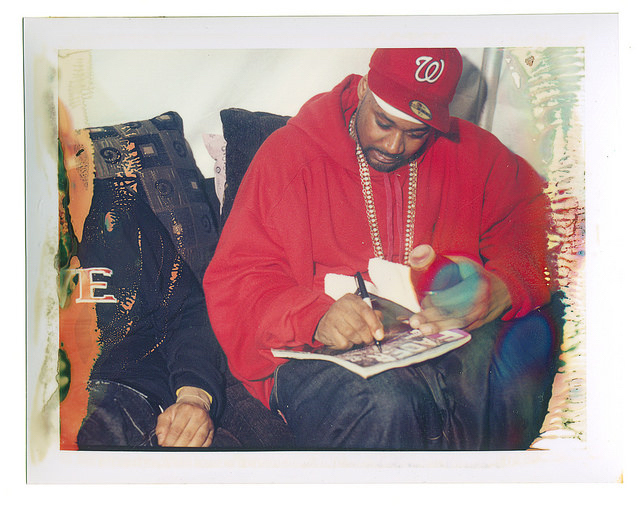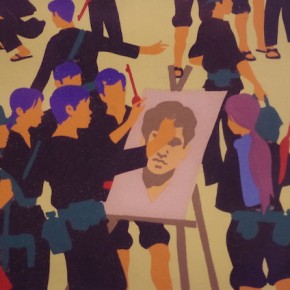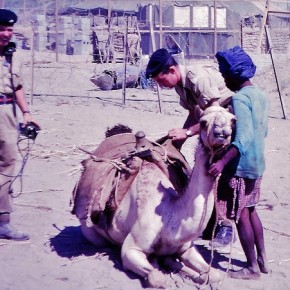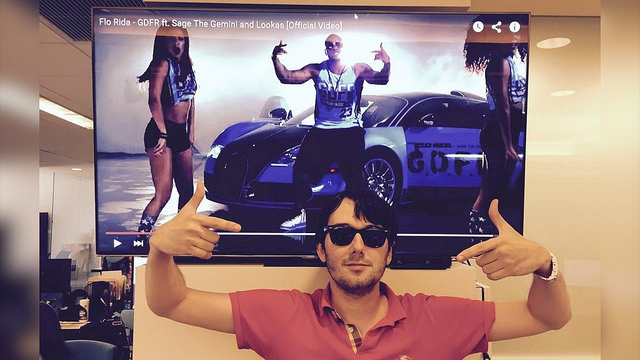Last year, the world was treated to an unexpected announcement from one of the most famous acts in hip hop. The Wu-Tang Clan revealed that it had secretly recorded a massive 31-track album that supposedly brought the band back to its roots and the raw, rugged, ominous sounds that made its debut, Enter the 36 Chambers, an instant classic upon its release in 1993.
However, unlike the host of albums previously made by the band or its individual members, the Clan’s newest album, Once Upon A Time In Shaolin, would not be released in record stores. Nor would it be performed live.
There would be no 180-gram vinyl or special edition picture discs, no download codes or streaming songs, and the album would not be forcefully inserted onto people’s phones by the invisible hand of Bono. Instead, the Wu-Tang Clan outlined its unprecedented plan to produce just one single CD. One.
It would not even be a ‘copy’, per se, since all the original studio tracks were intentionally destroyed in order to leave behind a single, solitary recording – a veritable jewel of music presented to the world inside of a gorgeous hand-hammered nickel and silver box made by British-Moroccan artist, Yahya.

Curious details about Once Upon A Time In Shaolin were initially revealed in a Forbes multimedia feature, where the Clan and the album’s producer, Cilvaringz, carefully discussed the production process and their plan to create a museum-style exhibition tour that would allow visitors to hear the album on site after being carefully screened for recording devices.
After ostensibly touring the world like a rare Picasso or an ancient holy relic, the album would then be sold to the highest bidder who, much to the chagrin of Wu-Tang fans, would be prevented from leaking the album publicly (such stipulations were later relaxed).
The project seemed both brilliant and preposterous and shrouded in the kind of mystery that any music fan would find intriguing. Despite my reservations, I loved the idea of such a high profile artistic experiment designed to question or challenge current trends in music distribution. The Wu-Tang seemed to say, if music is now just another cheap, digital thing that floats around the Internet like amateur porn and cat memes, then what happens if someone creates the ultimate musical artifact?
From the details of its ornate packaging to the unique premise itself, it was clear that the production and release of Once Upon A Time In Shaolin were carefully designed to make a bold statement. The Wu-Tang Clan’s famed producer and mastermind, The RZA (Robert Diggs), described the aim of the project, though in somewhat vague terms:
“The idea that music is art has been something we advocated for years…and yet it doesn’t receive the same treatment as art in the sense of the value of what it is, especially nowadays when it’s been devalued and diminished to almost the point that it has to be given away for free.”
People have long lamented the devaluation of art in their respective day and age, but the declaration sounded a bit odd coming from a band that pioneered some of the synergistic branding techniques that became standard fare within the image-based capitalist ecosystem of the late-20th Century. That is to say, the Wu-Tang Clan is as much a brand as a music group and this transformation took root early in the band’s career as its members performed both collectively and individually under the umbrella of the Wu-Tang Clan in the mid-1990s.
That strategy was one of many directed by RZA, who has always trumpeted his professional business approach to the entertainment industry and his stewardship over the “integrity of the brand” that is the Wu-Tang Clan. Fellow musicians and the popular press have long fawned over RZA’s impressive business acumen and his ability to work successfully across the boundaries of music, film, and commerce.
A case in point is the band’s creation of its own clothing company, Wu Wear, which was arguably the first entrepreneurial endeavor of its kind by hip hop artists. Twenty years after the launch of Wu Wear and countless self-promotional schemes later (including their shameless 1996 High School High soundtrack single “Wu Wear: The Garment Renaissance”), the Wu-Tang’s commodity empire now extends far beyond clothing and shoes and includes everything from beach balls and cell phone cases to keychain lanyards, bike helmets, baby onesies, towels, and greeting cards.
In describing the seemingly limitlessness nature of Wu-Tang’s branding endeavors, Wu member, Raekwon, once said “the music, the movies, the clothing it’s all part of the pie we’re making. In the year 2005 we might have Wu-Tang furniture for sale at Nordstrom.”
The Wu-Tang Clan’s enthusiastic approach to mass production and marketing certainly doesn’t discredit it’s ability to hold a critical perspective about the modern music industry, though it does complicate things when folks plead for the value of music as art while simultaneously emblazoning their song titles on $55 flip flops and air fresheners. Be that as it may, I am less interested in judging whether the Wu-Tang Clan is entitled to make claims about the value of music art then I am in the actual claims themselves, which I have yet to see challenged in the slew of articles devoted to both the Wu-Tang’s epic project and its predictably disappointing conclusion.
When discussing Once Upon A Time In Shaolin, the Wu-Tang Clan repeatedly situates it’s unorthodox project as a response to, and statement about, cultural transformations in the way that art is produced and experienced. On the whole, the Clan bemoans the current state of music and expresses both nostalgia and reverence for a time when art once had real meaning. The most definitive statement to this effect can be found on the album’s website, where RZA and Cilvaringz mourn the passing of a period in which great musicians were revered and music was once seen as a suitable vehicle for exploring human emotions and experience. Apparently this period is now over due to…wait for it…technology. And, of course, consumerism:
Perhaps it is our cultural attitudes to modern music that have cast it as something to be consumed. The complacency of no holds barred access and the saturation wrought by technology’s erosion of challenges. Mass replication has fundamentally changed the way we view a piece of recorded music, while digital universality and vanishing physicality have broken our emotional bond with a piece of music as an artwork and a deeply personal treasure.
This all sounds well and good, and very deep, except for the fact that it doesn’t make a whole lot of sense. First of all, consumption and mass replication are not roadblocks preventing us from having authentic experiences with recorded music – they are the very means by which most people have access to recorded music in the first place. Second, there’s definitely a strong case to be made for how our relationship to music changes when it ceases to exist in a physical format such as an LP or a CD, but the presumption here is that possessing such objects is the very thing that allows us to form an emotional connection to music and value it as art.
This is nonsense. Anyone who has ever attended a live music performance, played an instrument, or sang a song knows what it feels like to form an emotional bond with a piece of music, regardless of whether they own a physical copy of it. Finally, it’s more than a little bizarre for hip hop artists to stake a claim about how we should treat pieces of recorded music with reverence, as if they are all artworks and valuable treasures. I seem to recall people making similar arguments long ago about why it’s barbaric to put your hands on records and scratch them back and forth on the turntable (or how sampling destroys the integrity and meaning of original music compositions).
Despite some obvious holes in their sweeping analyses of art history and technology, members of the Wu-Tang Clan clearly understand the cultural power that an original work of art holds in a world filled with copies. Philosopher Walter Benjamin famously described this an artwork’s ‘aura’, which is to say, the almost magical properties we associate with an original artistic creation.
Benjamin, who was himself an avid art collector, argued that for better or worse the ability to mechanically reproduce/copy an artwork destroyed its aura by negating the authority, originality and authenticity of the original. While this may be true, it certainly doesn’t put to rest the often thorny relationships between originals and copies in the present day, nor does it ensure that an aura – or something similar to it – can’t be connected with or ascribed to an artwork through another means.
Suffice it to say, there is ongoing tug-of-war between those who champion technological reproduction as a means of democratizing art (and information) and those who view it as a threat to their traditions, professions and even their livelihoods. The Wu-Tang Clan clearly falls in the latter camp despite the fact that they frequently collapse these distinctions and use the language of ‘value’ to describe both the meaning/significance of an artwork and the price it will fetch in a market.
The Clan’s apparent solution for increasing both values is elegantly simple – just make one copy. The problem, of course, is that an original artwork (or any artwork, for that matter), can’t truly be appreciated if people can’t experience it. Indeed, the reasons why we are familiar with names like Bach, Beethoven and Mozart – composers invoked in the Wu-Tang’s discussion of music history – is not because they created singular recordings or prevented the public from listening to their songs; it is because their music is ubiquitous – it circulates everywhere from public radio to film scores to cheap CDs lodged in the bargain bins at truck stops in rural Pennsylvania.
If Wu Tang wanted to make a serious statement about art in the age of digital reproduction they certainly could’ve taken their bold high-profile concept and seen it through to some kind of logical conclusion. The initial stories about Once Upon a Time outlined ambitious plans to tour the album as an listening exhibit, undoubtedly to encourage visitors to treat the recording with the same kind of reverence and respect befitting of a great work of art.
Yet the tour was never organized (if it was even attempted) and the only public ‘performance’ of the recording came in the form a party staged for potential buyers and 36 lucky fans who were treated to just 13 minutes worth of the album. Hardly the kind of a museum caliber attraction befitting of an artwork RZA compared to the Mona Lisa (and say what you want about the Mona Lisa, at least you can see the goddamned thing in person).
But, if they wanted to, the Wu-Tang could have displayed the recording in a permanent gallery installation where hip hop fans and music officianados could pilgrimage to hear the tracks – they could’ve even hired a team of Shaolin monks to run security and destroy any recording devices with high-flying kicks.
And if the Wu-Tang Clan wanted to take a stand against the devaluation of art in our culture they could’ve taken the Fugazi approach and focused their energy on delivering powerful live music performances in intimate public venues. Or, they could’ve done something more radical akin to Art Strike, the group who of artists who once stopped making art for a period as a way to protest the idea of conceptualizing art as mere products. In short, Wu-Tang had plenty of options other than auctioning off their supposed masterpiece for a price that, in music industry terms, is chump change.
Ultimately, the Wu-Tang Clan took all of its precious creativity, energy, originality, and authenticity and sold it to Martin Shkreli – the now notorious scumbag who came to national prominence after he dramatically jacked up the prices of an AIDS medication his pharmaceutical company acquired the rights to produce.
In some ways it’s the most fitting end to the story that one could write. Because like the scepter of an Egyptian king, the object to which The RZA likened the Wu-Tang’s prized musical artifact, the album was almost destined to be obtained through plunder. Not the kind of plunder that sees khaki-adorned European archaeologists raiding ancient Egyptian tombs for treasure, but the kind of plunder unique to contemporary capitalism – one that rewards greedy, smug corporate raiders like Shkreli who can afford to blow millions of dollars on something with absolutely no inherent use value.
To the Wu-Tang’s credit they offered to donate an unspecified portion of the auction sale to charities after the winner of the most expensive album in history was revealed. But the band’s cautiously benign statement about the new default president of Wu America seems primarily rooted in PR damage control. After all, selling the lone copy of your most famous work to one of the most loathed creatures in the recent national news cycle isn’t good for business, and those Wu-branded socks aren’t selling themselves. But this was never about money anyhow – it was supposed to be a statement about art, if we take the band and its team of publicists at their word. By that measure, it’s a miserable failure.
With the auction closed and the experiment at an end, the Wu-Tang’s world famous stunt hasn’t taken us back to a mythical era when artists were universally revered and art truly meant something in society. Rather, it takes us back to a more historically accurate period when art was simply a trophy for the rich and artists were just a creative breed of exploited labor. Bloomberg‘s follow-up story on the Wu’s auction reveals just how true to life this scenario actually is. The article notes that Shkreli recently hired hit rapper Fetty Wap to perform at his company’s upcoming Christmas party, about which he had the following to say:
“Typically you would say, ‘As an average fan, I can’t get Fetty Wap to give me a personal concert’. The reality is, sure you could. You know, at the right price these guys basically will do anything.”
And that, more or less, is the quote that might best encapsulate everything that is so repugnant about the ethics of capitalism and the logic it nourishes – a mindset that positions arrogant, greedy white men at the center of a universe in which everyone else, and especially people of color (“these guys”), are essentially seen as whores who are willing, if not eager, to do anything for a buck so long as it pleases the guy holding the cash.
One would logically assume that Shkreli will release the album to the public since such a cheap form of positive publicity would help to redeem his reputation in a popular culture that has the collective memory of a goldfish. But it wouldn’t surprise me, or anyone for that matter, if he just kept the recording for himself.
In either case, and with hindsight barely 20/20, I wonder what is worst for the Wu Tang Clan: having their masterpiece purchased by the kind of vile scum who intentionally profits from the exploitation of AIDS patients, or the fact that their music will likely just be background sounds for a smarmy yuppie to hear while he’s working out at the gym or awkwardly throwing around phrases like “that shit is dope!” from the perch of his yacht. I guess only time will tell.
In the meantime, I’m still hoping that Bill Murray has a few tricks up his sleeve.
Photographs courtesy of Wu-Tang Clan and Alex Wright. Published under a Creative Commons license.





